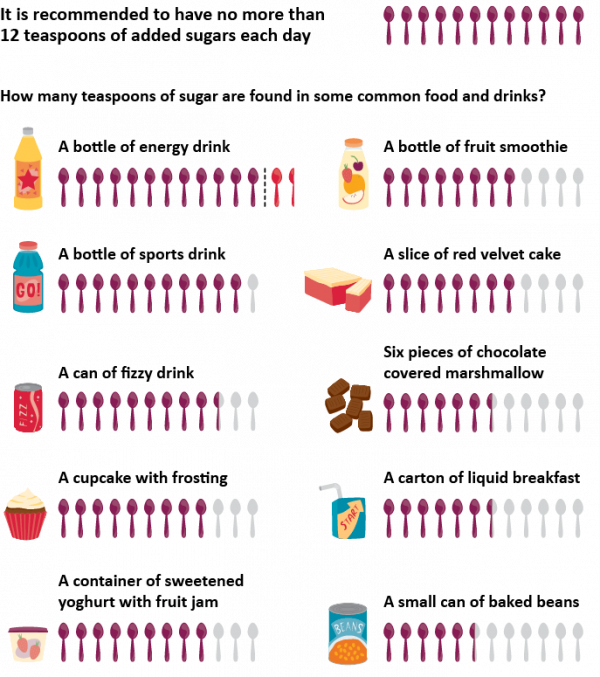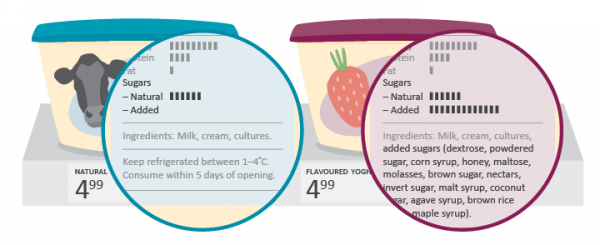How much sugar should we eat?
The World Health Organization (WHO) recommends a maximum intake of sugars of less than 10% of total energy intake for adults and children, and less than 5% for better health, excluding sugars found in whole fruits, milk and vegetables.
That is about 50g, or around 12 teaspoons per day (one teaspoon = 4g of sugar). Further reductions to below 5% of the total energy intake (or around 6 teaspoons) could provide additional health benefits.
The infographic below illustrates some common everyday foods and their sugar content.

Added sugars are hard to detect in food and drink
On food labels, only the total sugar content must be declared. This makes it difficult to work out how much sugar has been added, and how much natural sugar is in the food or drink. The added sugars can have many different names, including dextrose, powdered sugar, corn syrup, honey, maltose, molasses, brown sugar, nectars (e.g. peach nectar), invert sugar, malt syrup, coconut sugars, agave syrup, brown rice syrup and maple syrup.
The US Food and Drug Administration have made it compulsory to include added sugars in grams and as a percentage of the daily diet to food labels in the USA from year 2018. At present there is no move to do the same in New Zealand.

